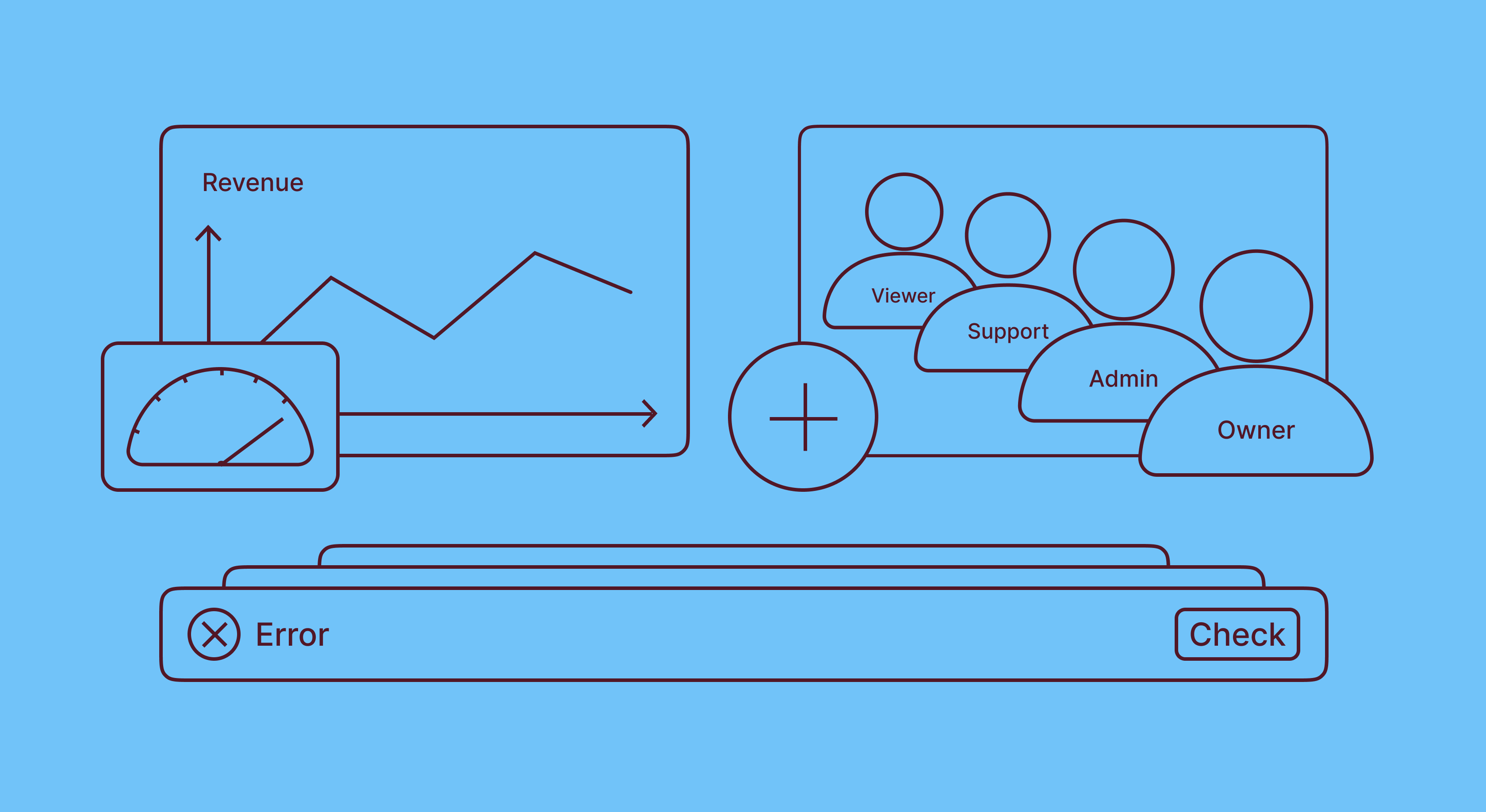A complete guide to content marketing for mobile apps

Updated: November 22, 2023
20 min read

Here’s an ugly truth: being a better app than the competition doesn’t cut it.
But how you promote your app does.
In simple words, if you want your potential users to find your app amongst millions of other apps, you’ll have to create a marketing strategy that screams louder than others. The correct term for this is “content marketing strategy”.
From what it is, why you need it, and what it includes, we’re going to dive into all the aspects of how you can use this outbound marketing method to dominate your target niche in no time!
Fun fact: What you’re reading right now is a perfect example of the content marketing strategy employed by Adapty!
Anyways, let’s start with the basics…
What is content marketing?
Content marketing is a strategic marketing approach to attract, engage, and retain your target audience with audience-centric content including videos, blogs, articles, infographics, and newsletters.
Today, content marketing is taking the internet by storm, allowing small businesses and entrepreneurs to grow a loyal following and drive profitable customer actions to gain a larger market share.
And that’s exactly why app developers should be doing it more!
The digital landscape today for an app developer is oversaturated, overheated, and overleveraged than it was 5 years ago. Your global audience might be in the millions, but so is the number of apps available to them—6.5 million apps and counting!
But all hope isn’t lost yet because you can still make your mark in this $208.5 billion industry with content marketing. Now the real question is how content marketing makes for successful mobile app marketing today!
What are the benefits of content marketing?
Content marketing for apps has taken the app stores by storm, and here are 5 reasons why you should hop on the opportunity too:
Cost-effective
Let’s be honest, nobody wants to pay more than they need to, right? And as a budding app developer for a mobile app, you’re not that loaded either! But with content marketing, you don’t need to spend a lot to have an effective mobile content strategy.
Content marketing is a highly cost-effective strategy for mobile app developers and marketers. Compared to traditional advertising methods, such as paid ads or television commercials, creating and distributing content can be significantly more budget-friendly.
It allows you to reach a wide audience without the high costs associated with paid media!
Increases visibility and traffic
Content marketing plays a crucial role in increasing the visibility of your mobile app. By creating content that resonates with your target audience and is optimized for search engines, you can improve your app’s online presence.
As users search for information related to your app’s niche or problem-solving capabilities, your content can rank higher in search results, attracting organic traffic.
This increased visibility not only helps potential users discover your app but also drives traffic to your website or app stores, leading to greater chances of downloads and user engagement.
Builds up on other marketing tactics
Content marketing synergizes with various other marketing tactics and channels. It can complement your paid advertising efforts by providing content that educates and persuades users after they’ve seen your ads.
Content can be shared on social media platforms, enhancing your social media marketing strategy. It can also serve as valuable content for email marketing campaigns, newsletters, and even influencer partnerships.
I like to call that a win-win situation!
Retains and engages the target audience
One of the key benefits of content marketing is its ability to retain and engage your app’s target audience. By regularly publishing informative and entertaining visual content, you can keep your existing users engaged and informed about your app’s updates, features, and best practices.
What this really does is build and foster a strong user base and encourage them to continue using your app in the long run. Engaged users are more likely to provide feedback, become advocates, and even refer new users, contributing to sustained growth!
Builds trust and rapport
Trust is a vital element in the success of a mobile app, especially when users are deciding which apps to download and use. Content marketing allows you to build trust and rapport with your target audience by providing valuable and relevant information.
When potential customers perceive your brand as an authority in your app’s niche, they are more likely to trust your app and choose it over competitors.
Content marketing channels
So you’re ready to dip your feet in content marketing strategy for your mobile app’s success in app stores. Now, it’s time to explore your options within the content marketing strategy space.
Fortunately, content marketing isn’t written in stone and there’s unlimited freedom on how you envision your content marketing strategy to work for you.
For the Gen Z app developers out there, social media platforms are familiar elements, while data analysts might feel more at home when they’re looking at SEO statistics and working accordingly.
But no matter who you are, there are 6 channels that you can utilize to boost your mobile app marketing. And yes, you can and should utilize them all in combination, depending on what your buyer personas look like!
App Store Optimization (ASO)
App Store Optimization (ASO) is a critical component of content marketing for apps, focusing on optimizing your app’s presence within app stores to improve rankings and increase app downloads.
When potential users search for apps on app stores, the keywords, app title, description, and visuals you use play a significant role in whether your app appears in search results and catches the users’ attention.
Common elements you should focus on when considering ASO as a mobile marketer include:
- App title,
- App description,
- App Screenshots and other visual content,
- Ratings and reviews,
- Updates, and
- Keywords within app descriptions.
Tip: Always have documentation for every scenario you might face in your ASO strategy, such as facing ASO cannibalization!
Website SEO content marketing
You want to drive organic traffic and indirectly app downloads. And to do that, you’ll have to implement a smart SEO strategy within your content marketing strategies.
SEO or search engine optimization optimizes your website content for search engines like Google so your website or app is one of the top results people find when they search in your niche.
As users discover and engage with your website content, you have the opportunity to promote your mobile app, leading to higher chances of downloads.
Keep in mind that SEO efforts don’t show up immediately, but instead take at least 2–3 months to show results. And even then, you’ll have to tweak things till you get your perfect strategy on content marketing for apps!
That said, here are some elements that are crucial in SEO content marketing strategies for your mobile app marketing:
- Money-making main keywords,
- Natural language processing words,
- Internal and external links,
- Backlinks from high DA websites,
- Easy reading content,
- Site speed,
- Clean URLs!
Blogging
Maintaining a consistent blog can offer numerous benefits for mobile app marketing. Blogs allow you to share updates about your app, offer valuable insights related to your app’s niche, and address common user questions or pain points.
If you stick to regularly publishing informative and engaging blog posts, you can attract potential users searching for information related to your app’s domain.
Blogs also provide an avenue for showcasing your expertise, building trust with your audience, and promoting your app in a subtle and educational manner, ultimately driving more app downloads.
If you’re running low on cash for your content marketing for apps, you can always enable Google Ads and feature affiliate links on your blog posts and earn some passive income in the meantime!
P.S. The SEO strategies we talked about earlier here are relevant to writing successful blog posts!
Guest posting and PR
I don’t know about you, but when I was starting out professionally, I kept hearing, “Laiba, you should network with people you want to work with. Connections like that go a long way!”
And while it felt confusing to hear back then, it certainly helped. You’re reading my stuff today, aren’t you?
Guest posting and PR are just another way to say that your app needs to network.
Collaborating with established platforms and leveraging media relations through guest posting and PR efforts can significantly boost your app’s visibility by reaching a broader audience and establishing credibility in the niche.
On average, guest posts can cost you around $100 to $600 per post, but there are always many exceptions! You just have to make sure you’re picking good channels.
Social media content marketing
Today’s world runs on social media.
From that Thai place down the street to a seasonal jack-lantern pop-up shop, you’ll find everything online. So why shouldn’t your target audience find your app there?
Social media marketing means creating engaging visual content with informative and optimized captions, hashtags, and keywords to attract your potential customers on social media platforms.
Since 2020, the most dominating social media platforms where your mobile app should have social media accounts are:
- TikTok,
- Instagram,
- Facebook, and
- X (formerly Twitter).
The key to acing social media marketing is to create content that is relevant to your potential user’s pain points while staying informative, light-hearted, and share-worthy.
Email content marketing
Email campaigns play a crucial role in nurturing leads, announcing app updates, and driving user engagement. By building an email subscriber list, you can communicate directly with users who have shown interest in your app!
Email content can include:
- Newsletters (you should sign up for ours, by the way),
- Product updates,
- How-to guides, and
- Exclusive offers!
It allows you to stay in touch with your user base, keep them informed, and encourage them to continue using and promoting your app. Well-crafted email content can lead to increased user retention and your app’s downloads, making it an essential part of your overall marketing strategy.
2024 subscription benchmarks and insights
Get your free copy of our latest subscription report to stay ahead in 2024.
Best practices of content marketing for mobile apps
A successful and interactive content marketing strategy is something you can achieve for your mobile app when you know the best practices.
The good news? We’re diving right into the best practices for mobile app marketing!
1. Set out clear goals for your content strategy
What if I asked you to walk through a bridge 100 feet in the air, but with blindfolds? Crazy right?
That’s exactly what you’ll look like if you don’t set out clear goals for your mobile app marketing strategy!
Are you aiming to increase app downloads, boost user engagement, or establish thought leadership in your app’s niche?
Setting these objectives will serve as guiding principles throughout your content creation and distribution efforts, ensuring that every piece of content aligns with your goals. Clear goals also help measure success and make informed decisions about strategy adjustments.
2. Know your target audience
Understanding your target audience is paramount. Research your potential users to grasp their demographics, preferences, and behaviors. What challenges do they face, and how can your app address them?
By tailoring your content to address your audience’s specific needs, interests, and pain points, you can create content that resonates deeply and compels them to take action, such as downloading your app.
Hot tip: Build a buyer persona to know just how your average customer thinks!
3. Use your audience’s language
If you want them to hear you, speak like them. Mirror the tone, expressions, and language commonly used by your target audience in your content. As you begin venturing further into mobile app marketing, listen to how your audience acts on social media.
Ask yourself these important questions:
- Do they talk formally or informally?
- Do they use emojis?
- Do they type big chunky paragraphs or get straight to the point in one sentence?
- Do they use abbreviations like lol, ngl, tbh, or nvm?
- Do they use humor on social media? If yes, is it crude or light-hearted?
4. Create a content calendar
A content calendar is a vital tool for maintaining consistency and timely distribution of content. Plan your content creation and publication schedule in advance. Consider factors like content themes, publishing dates, and the use of relevant keywords and hashtags.
5. Focus on building high-quality content first
Repeat after me: quality over quantity.
High-quality content is informative, valuable, and engaging, offering real solutions or insights to your audience. Such content not only builds trust but also encourages users to return and explore your app.
Avoid the temptation to produce content in bulk if it compromises quality.
6. Use different content types according to your audience’s needs
Diversify your content formats based on your audience’s preferences and the specifics of your distribution channels. Some users may prefer blog posts, while others may engage more with videos, infographics, or podcasts.
You are responsible for finding out where they are!
Tailor your content to cater to these varied tastes and leverage different formats to convey your app’s benefits effectively. Adapt to the platform where you’re sharing content; for instance, use visually engaging graphics for Instagram or informative blog posts for LinkedIn.
7. Find effective channels to promote your content
Identify the most impactful platforms for distributing your content to reach your target audience. This could include social media platforms, email marketing, guest posting on industry blogs, or collaborations with influencers.
Each channel has its unique strengths, and selecting the right ones ensures that your content resonates with the right people. Invest time and resources where your audience is most active to maximize the reach and impact of your content.
8. Analyze the results
Last but not least, don’t forget to quantify your efforts with metrics. Regularly assess the performance of your content marketing efforts through metrics like website traffic, conversion rates, engagement levels, and app downloads.
Analyze the results to understand what’s working, what needs improvement, and what needs to go. Analytics go a long way in analyzing these results, and the next section is all about…
Measuring content marketing effectiveness
Once you’ve implemented your mobile app marketing strategy, there’s one last thing to do. You have to measure the effectiveness of the strategy employed.
Measuring content marketing metrics is crucial to making informed decisions and seeing the impact of your efforts quantitatively. That way, you can see what works better for you, your resource allocation, and what practices are harming your performance online.
And when you actively work on revising and devising the perfect mobile app marketing strategy, you improve your ROI!
Here’s a quick list of metrics you should be ideally tracking monthly and quarterly for your strategy:
- Website Traffic: Indicates content visibility and audience engagement.
- Conversion Rate: Measures how content drives actions like app downloads.
- Bounce Rate: Highlights content quality and user engagement.
- SEO Ranking: Evaluates content’s search engine visibility.
- Backlinks: Shows content’s authority and reach.
- Social Shares: Reflects content’s virality and impact.
- Email Open and Click Rates: Measures the effectiveness of email campaigns.
- Time on Page: Demonstrates content engagement.
- Lead Generation: Tracks how content contributes to new app users.
- ROI: Calculates the return on content marketing investment.
There are many tools that can make your life easier when it comes to these metrics. Here are my top 5 tools to analyze mobile app marketing:
- SEMrush: The best tool to research SEO keywords, optimize on-page SEO, and perform competitor analysis.
- Google Analytics: Provides comprehensive website analytics, page visits, site speed and auditing,
- Hootsuite: Perfect to help manage and analyze social media campaigns and schedule content posting.
- Mailchimp: Tracks email campaign metrics, and schedules newsletters and email funnels.
- Adapty Cohorts: Advanced cohort analysis for mobile subscriptions, profitability, and more.
Final Thoughts
Content marketing for apps is a strategic approach to creating and distributing valuable, audience-focused content that promotes mobile apps. It’s crucial for boosting app visibility, attracting users, and nurturing engagement.
The five main channels are:
- Blogging,
- Website SEO,
- Guest posting,
- Social media, and
- Email campaigns.
If you want to succeed in mobile app marketing, you should be crafting a content marketing strategy, setting clear goals aligned with app growth, diversifying content, choosing effective distribution channels, and continuously measuring results!
That said, best of luck in your newfound venture of mobile app marketing!
FAQs
What are examples of content marketing?
Examples of content marketing include blog posts, infographics, videos, podcasts, social media posts, e-books, whitepapers, and webinars.
These content types are created to educate, entertain, or inform an audience while subtly promoting a brand, product, or service, building trust, and attracting potential customers.
Why is content marketing important for an app?
Content marketing for an app is crucial because it helps increase visibility, engage users, and build a loyal customer base.
Through informative blog posts, engaging social media content, and tutorials, content marketing can showcase an app’s value, address user needs, and establish the app as a trusted resource, ultimately driving downloads and user retention.
Can I use one content strategy for all platforms?
No, you shouldn’t use a single content strategy for all your platforms because each of them has unique audiences, formats, and engagement patterns.
Tailoring content strategies to each platform helps maximize reach and effectiveness. Adjust your approach, content types, and messaging to align with the specific characteristics and expectations of each platform.
What metrics should I track to measure content marketing effectiveness?
Track metrics like website traffic, conversion rates, social engagement (likes, shares), email open rates, click-through rates, and lead generation. Plus, you should assess content reach, audience retention, and customer feedback to gauge content marketing effectiveness.
These metrics provide insights into audience engagement, brand visibility, and the impact on business goals.
Recommended posts

Product-releases
May 5, 2022





